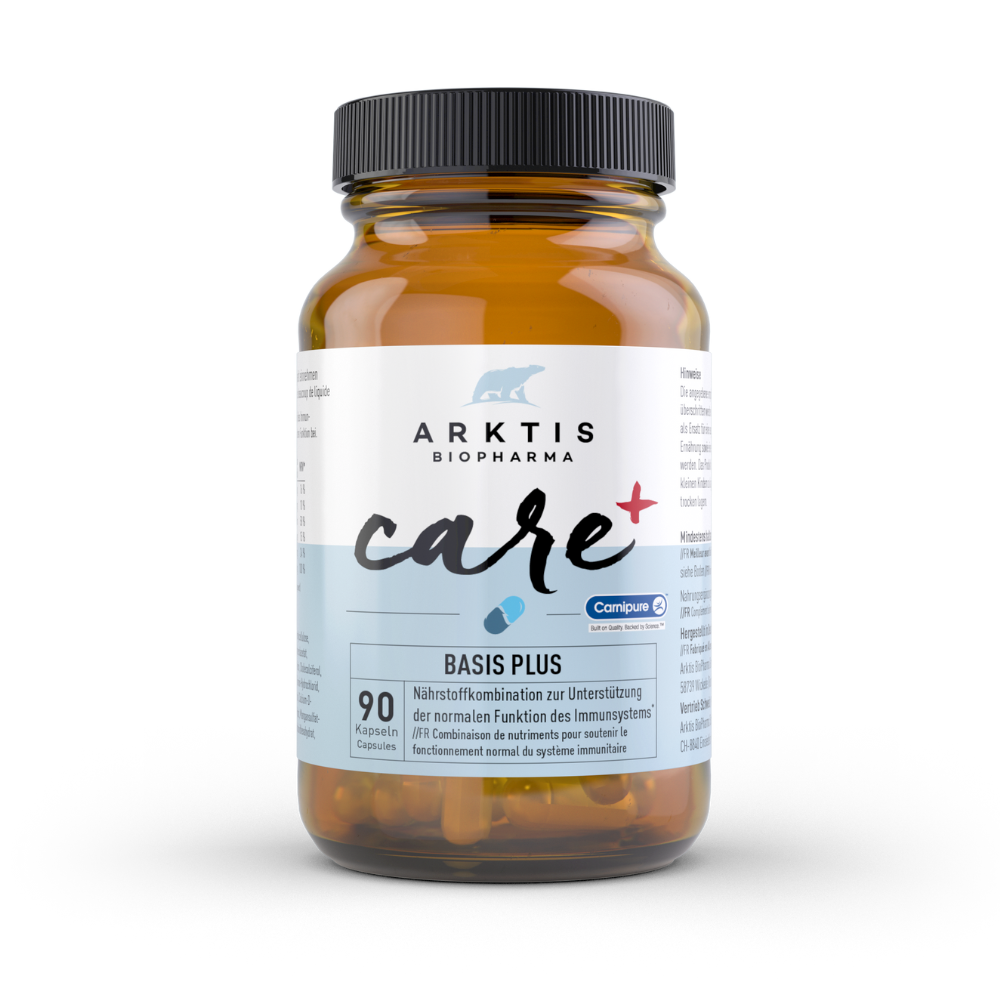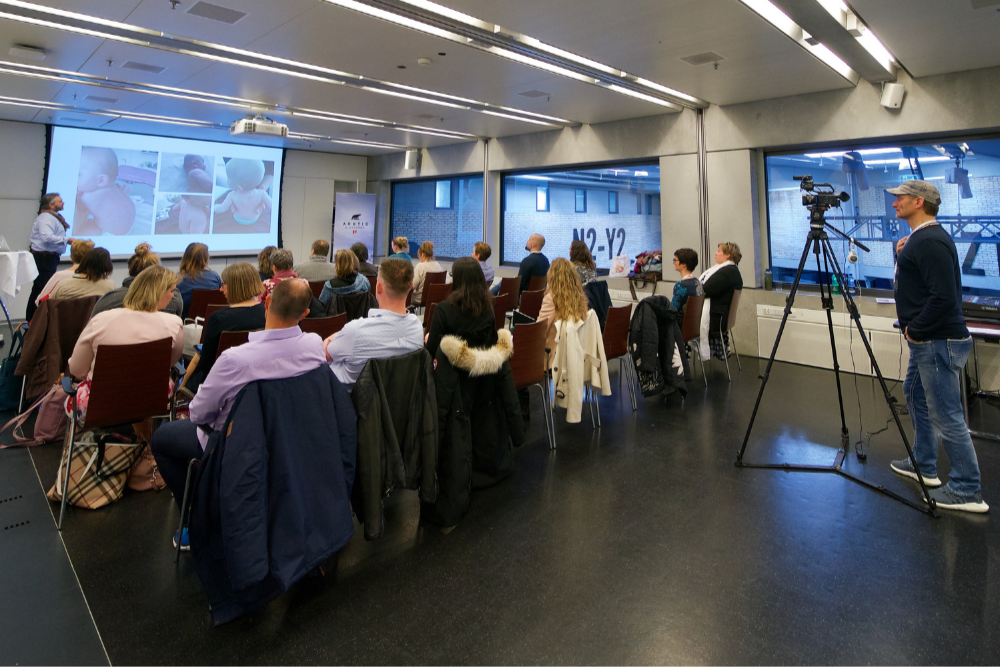As you already know, the entirety of all microbes that live in and on us is called the "microbiome".
We have microbes on all surfaces of our body: on the skin, but also on the mucous membranes, including the intestinal mucosa.
The community of intestinal microbes is the largest, with the most different types of microbes. Without microbes, a healthy life would not be possible for us.
New analytical methods from research make it possible to identify all these types of microbes. It's an absolute hot topic at the moment and I think we'll be hearing a lot more about it in the future.
Why the gut microbiome is so important
The microbiome has many different functions. Firstly, the intestinal bacteria extract important nutrients from our food. Our digestive system cannot break down fiber, but our gut bacteria can, for example. This is why we get vitamin D, vitamin K and short-chain fatty acids etc. from them, which in turn are very important for the health of the intestinal mucosa.
The intestinal microbiome also communicates with the brain, protects us from infections and plays an important role in the immune system. Immune cells are virtually formed in the gut.
Intestinal bacteria in babies
A child is "equipped" with a microbiome right from birth. Where the baby's microbiome comes from and how it is formed, these questions have not yet been conclusively answered. Research does not yet provide any solid data on this.
It is clear that microbes are transferred from the mother to the child during natural birth, but research is still in its infancy on this aspect too.
One thing is certain: in children born by caesarean section, far fewer microbes from the mother can be detected than in those born naturally.
[caption id="attachment_14739" align="aligncenter" width="700"] Source: Unsplash[/caption]
Source: Unsplash[/caption]
Some suspect that a baby's intestines cannot be sterile because bacteria can already be detected in the meconium - the very first bowel movement.
This is also supported by the fact that microbes are present in the placenta that are otherwise at home in the mouth. Some studies say that amniotic fluid is not sterile either. A counter-argument is that it is possible to raise sterile rodents in the laboratory because they are delivered by caesarean section. If colonization began in the womb, this would not be possible.
A Swedish study also shows that mother and child have on average 72% of the same intestinal bacteria 5 to 7 days after a natural birth. With This figure was only 42% for children born by caesarean section in the same period.
However, the immediate environment, other contact persons, medication, genetic factors or whether or not someone has pets - such factors can also influence the microbiome.
Also interesting: the differences between children born naturally and children born by caesarean section become smaller and smaller over time. However, it can take up to four years before both are at the same level.
Natural birth vs. caesarean section: effects on the intestinal flora
Children who are delivered by caesarean section are a third more likely to struggle with obesity later in life. A study from 2015 also found that they have a higher risk of immune disorders.
There is broad agreement that the type of birth affects the differences in the composition of the baby's intestinal flora.
This is why some researchers and doctors advocate the "bacterial bath" after a caesarean delivery. This involves taking a swab from the mother's vagina and transferring it to the baby's skin or around the mouth. However, even this method has not yet been sufficiently researched. Many microbiologists are skeptical - especially as it is not yet known exactly how the natural transfer takes place.
After all, the intestinal bacteria are transferred "in an as yet undetermined way". It is also a fact that the intestinal flora differs significantly from the vaginal flora.
The intestines of premature babies are also not yet fully developed. This increases the risk of complications even after birth, including necrotizing enterocolitis, which can disrupt the absorption of intestinal microbes. How early the baby was born also plays a role here.
It has been shown that premature babies have differences in the diversity of the microbiome, i.e. how many different types of microbes the child has. A high diversity of the gut microbiome is important for the health of the child. In this context, I would like to point out something interesting:
There is evidence that an altered composition of the maternal microbiome could increase the risk of premature birth. This would mean that altered intestinal flora can be both a cause and a consequence of premature birth.
But here too, and I repeat myself, I would like to mention that the evidence base is still very thin.
Factors influencing the intestinal flora of babies
Now let's take a look at the factors that influence a baby's intestinal flora. This starts even before birth. Firstly, the mother's health, diet and weight play a role during pregnancy.
The mother's intestinal flora also changes at different stages of pregnancy.
Breastfeeding babies
The following fact is very important: it makes a difference to the baby's intestinal flora whether a baby is breastfed or not.
This is because breast milk contains more than 700 different types of bacteria. The baby needs these in its gut for nutrient metabolism, nutrient absorption, for building up its immune system, for a healthy intestinal mucosa and for the development of the gut-brain axis, i.e. the communication axis between the brain and the brain. and digestive tract. Breast milk also contains prebiotics to feed the bacteria in the baby's gut. Bifidobacteria in particular are important for growth and immune defense.
There are the following differences in the microbiome of breastfed and non-breastfed babies:
In breastfed babies, for example, bifidobacteria predominate in the intestinal flora. Babies who are bottle-fed develop a microflora that is more characterized by bifidobacteria, clostridia and streptococci.
How long a baby is breastfed also plays a role. The best results have been demonstrated in children who have been breastfed for longer than six months. However, breastfeeding for much longer, for example more than 30 months, can hinder the maturation of the intestinal flora.
I mentioned earlier that the mother's intestinal flora changes during pregnancy. The following is also interesting to mention in this context:
The composition of breast milk also changes. First comes the colostrum, also known as colostrum. This contains different bacteria than the breast milk that follows. Environmental influences, medication and the mother's diet all play a role. Whether breastfeeding works or not also depends on whether it works, what value the mother attaches to this aspect, and so on. Sometimes it just doesn't work.
The father's contribution to the baby's microbiome
Now we come to another exciting point in the development of the child's gut microbiome. For example, intestinal bacteria from the father have been detected in the meconium - the baby's first bowel movement. How do they get there? Good question.
It is thought to be through kissing during pregnancy - which in turn suggests that the colonization of the baby's intestines begins before birth. However, once the baby is born, bacteria are naturally transferred from father to child very quickly via touch and cuddles.
At some point, the colonization of the baby's intestines is largely complete. After weaning, a microflora develops that is similar to that of adults. From then on, the composition of solid food plays a role. This process is complete by the age of around three to four years. And just as with adults, I can still have an influence on a child's intestinal flora. Especially through what the child eats.
[caption id="attachment_14740" align="aligncenter" width="700"] Source: Unsplash[/caption]
Source: Unsplash[/caption]
Baby's diet
Ready-made products, for example, often contain preservatives. These in turn inhibit good bacteria. Sugar also promotes the growth of bacteria that are less desirable.
If the child has had to take antibiotics - which unfortunately cannot always be avoided in certain circumstances - as a mother or father I must remember that the good bacteria in the child's intestines are also affected. A probiotic (lactic acid bacteria) would be beneficial for the child before, during and after the antibiotic therapy to strengthen the intestinal microbiome.
If a caesarean section is unavoidable or is a wish of the parents, it would also help the baby to take a probiotic to promote the intestinal flora. to take. There are preparations that are specially formulated for newborns and infants.
Arktis Biopharma has developed exactly for this application for babies and infants Arktibiotic START for babies and toddlers. It contains three of the most important STARTer cultures: Bifidobacterium bifidum BB-12, Lactobacillus rhamnosus. And Streptococcus thermophilus TH-4.
This probiotic in powder form can be easily administered to the baby and dosed appropriately. Incidentally, the mother can also take it during pregnancy and while breastfeeding.
















